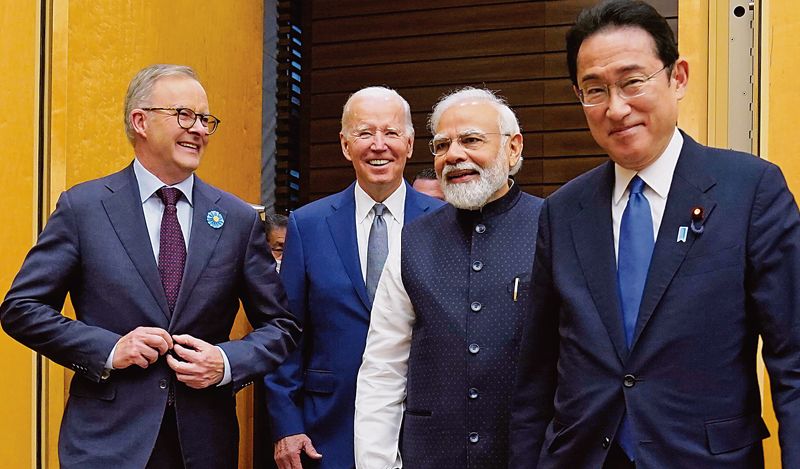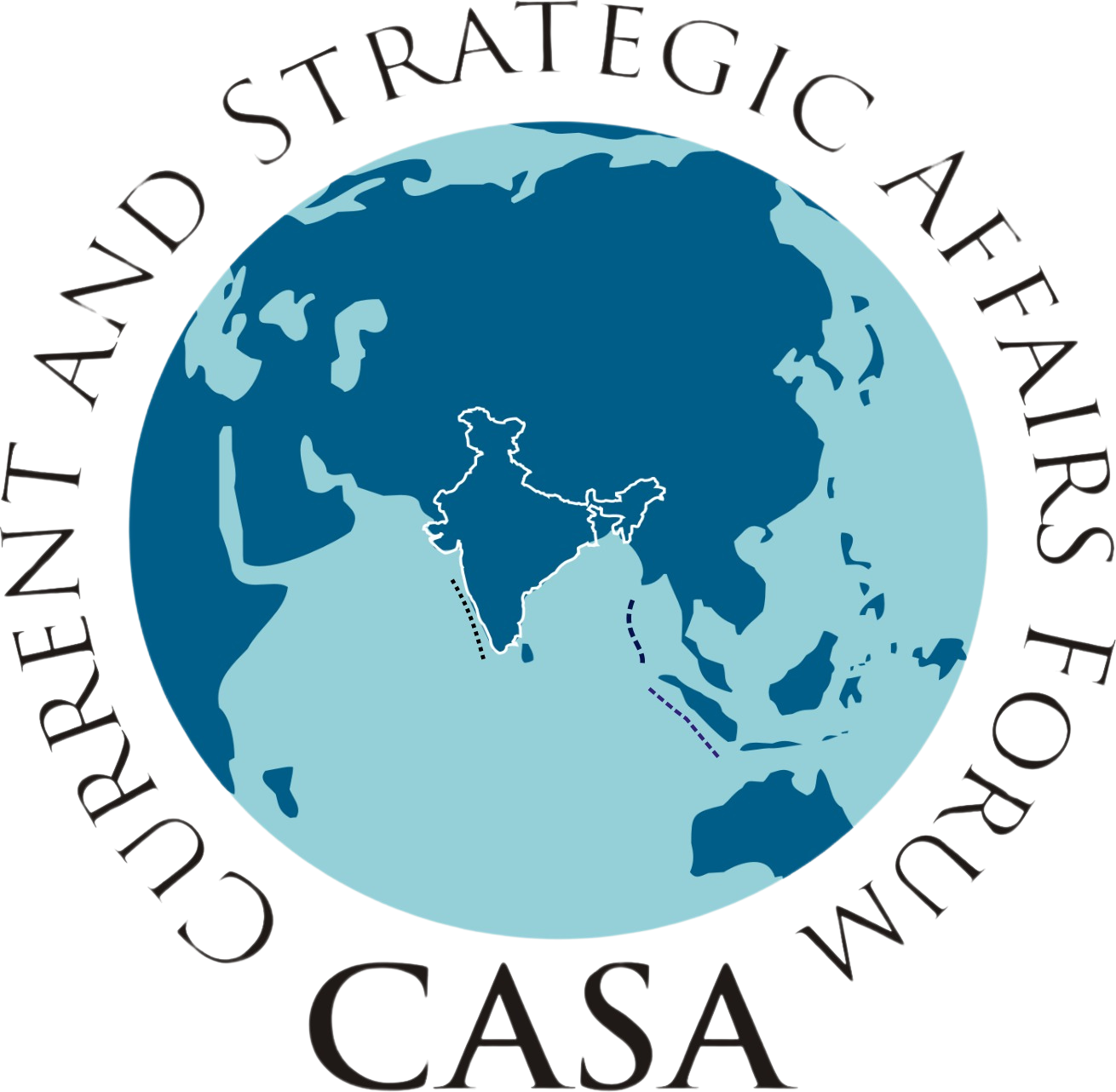Quad makes pragmatic push to cement ties
- May 27, 2022
- Posted by: admin
- Categories: India, North Korea, Russia, Ukraine



Gurjit Singh
Former Ambassador
Though Biden wants Quad to look at Russia’s Ukraine invasion and North Korea’s nuclear threats, he views the partnership of four major democracies in the Indo-Pacific as vital to challenge China’s influence in the region. The balance among these threats varies between Quad partners.
THE Quad Summit held in Tokyo on Tuesday was the fourth such occasion in the past two years. The four leaders met at a virtual summit in March 2021 followed by the first-ever physical summit in September 2021 in Washington DC. Thereafter, in March 2022, another virtual meeting took place and the Tokyo physical summit of 2022 shows the quick turnaround time for Quad summits since the Biden administration took over.
Prime Minister Narendra Modi and US President Joe Biden are seniormost among the Quad leaders, while Japanese Prime Minister Fumio Kishida is a more recent entrant. Australian Prime Minister Anthony Albanese participated in the summit soon after his election victory.
A salient difference between the Quad summits of 2021 and 2022 is the context. Undoubtedly, the Quad assimilated to pose a challenge to China’s hegemonic intent in the Indo-Pacific. The US pivot to Asia was inadequate and required the support of like-minded and willing countries like India, Japan and Australia. While Japan and Australia are US allies, India is an important strategic partner.
The summits of 2021 reduced the rhetoric on security and strategy and focused more on functional cooperation, particularly targeting ASEAN, whose centrality was trumpeted. It became evident that to challenge China, the main arena was the South China Sea, where China made serious inroads into fulfilling their strategic ambitions and winning over ASEAN countries with large economic cooperation. Japan was a major economic partner of ASEAN, but by itself could not match the strategic economic outreach of China and thus the Quad adjusted its positions. Since ASEAN prefers not to take sides between China and the USA, the readjustment of Quad’s public position was to bring alignment with ASEAN concerns.
The 2021 summits focused on Covid, better health security and the Quad vaccine initiative; they also looked at the Quad Infrastructure Coordination Group, climate issues, hydrogen, education and people-to-people exchanges. Critical and emerging technology remains an important area where there is serious competition with China which leads to cybersecurity.
The March 2022 summit convened after the Ukraine crisis, whose broader implications were discussed. The US remains keen to aggregate the Quad to provide strategic and humanitarian support to Ukraine, the same way that are planned for the Indo-Pacific. India remains lukewarm to this. The Ukraine crisis, portraying Russia as enemy number one, has the potential of derailing the concerted challenge to China in the Indo-Pacific. For India, it is not Russia but China, which is the main threat. The Indo-Pacific policies which the Quad pursues ought to remain focused on China and should cover Russia only if Russia becomes more active in this region.
The convening of the fourth Quad summit in Tokyo, came on the back of the US showing more interest in the region, despite the Ukraine crisis. Biden hosted a summit with the ASEAN leaders on May 12-13 and then proceeded on a tour of South Korea, where he met the new President Yoon Suk-yeol, and Japan. The intent was to deepen security cooperation with both and encourage them to impose further sanctions on Russia amid the Ukraine war.
Though Biden wants Quad to look at Russia’s Ukraine invasion and North Korea’s nuclear threats, he views the Quad partnership of four major democracies in the Indo-Pacific as vital to challenge China’s growing influence in the region. The balance among these threats varies between the Quad partners.
There are four, among many things that the Quad is coordinating on, in which India has a direct interest. To deal with Covid, the Quad vaccine initiative has already agreed to manufacturing facilities in India. There is another group dealing with decarbonised green shipping lines in the Indo-Pacific, which will use hydrogen as fuel. India with its new hydrogen policy is keen to get this technology and perhaps be a manufacturing base for hydrogen.
Thirdly, the Quad infrastructure coordination group is looking at quality infrastructure in the region. This is again an area of Indian interest, as through this India can enhance its profile in its neighbourhood. The fourth important group deals with critical technologies and cybersecurity. India has an interest in both, particularly in setting up semiconductor production in the country, to become part of an independent supply chain and not remain dependent on China-based supplies. Cybersecurity is an area of extreme importance for India. The Quad cybersecurity and semiconductor initiatives are good outcomes from the summit.
The six major takeaways from this summit are: (i) The Indo-Pacific Partnership for Maritime Domain Awareness, which brings commitment for a faster, wider and accurate maritime awareness of almost real-time maritime movement in regional waters; (ii) Quad will seek more than $50 billion of infrastructure assistance and investment in the Indo-Pacific, over the next five years. This will keep debt stress in firm view to differentiate from the BRI; (iii) The Quad Climate Change Adaptation and Mitigation Package (Q-CHAMP) with mitigation and adaptation as its two themes was launched. Q-CHAMP includes ongoing activities under the Quad Climate Working Group on green shipping and ports aiming for a shared green corridor framework and others. Its coverage includes new cooperation in clean fuel ammonia, carbon recycling, cooperation and capacity-building support to advance high-integrity carbon markets; (iv) The Quad will increase interoperability and security through the signature of a new Memorandum of Cooperation on 5G Supplier Diversification and Open RAN (radio access networks); (v) The Common Statement of Principles on Critical Technology Supply Chains, launched at the summit, advances Quad cooperation on semiconductors and other critical technologies, providing a cooperative foundation for resilience against various risks; (vi) The Indo-Pacific Economic Framework (IPEF) has brought 13 countries together to discuss an economic future together. This is the first time India is an economic arrangement in the Indo-Pacific. It included all RCEP countries except China, Cambodia, Laos and Myanmar and adds India and the USA. Its success is that it gets seven ASEAN countries to join the consultations process.
The Quad is on the right track and is getting better at implementing its ideas and securing adherents as well as acceptability. That is the way to challenge China’s hegemony in the region.
